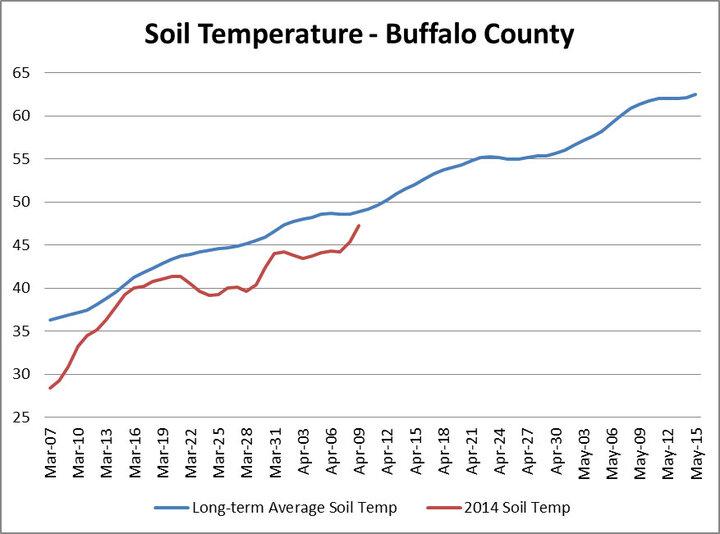
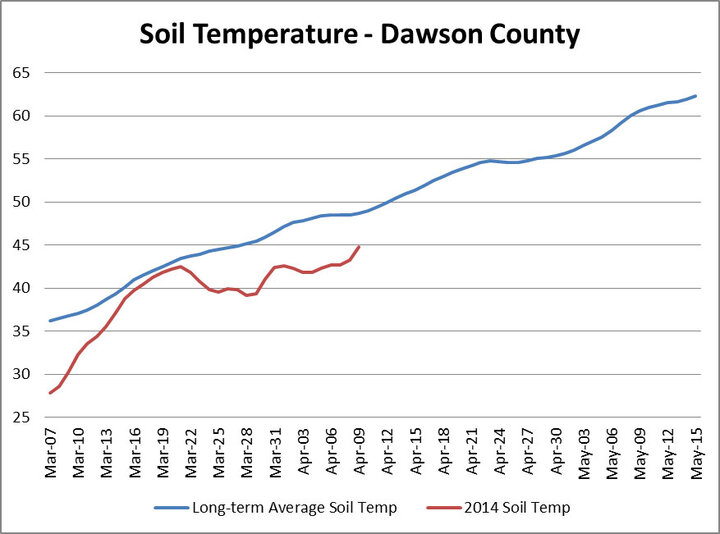
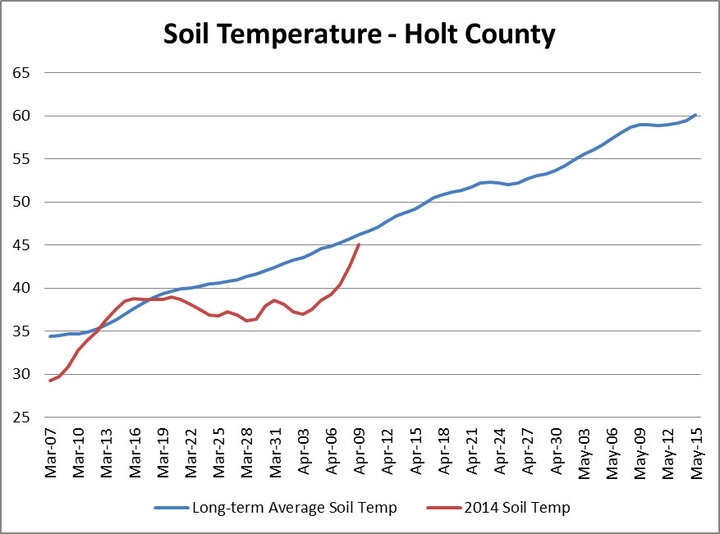
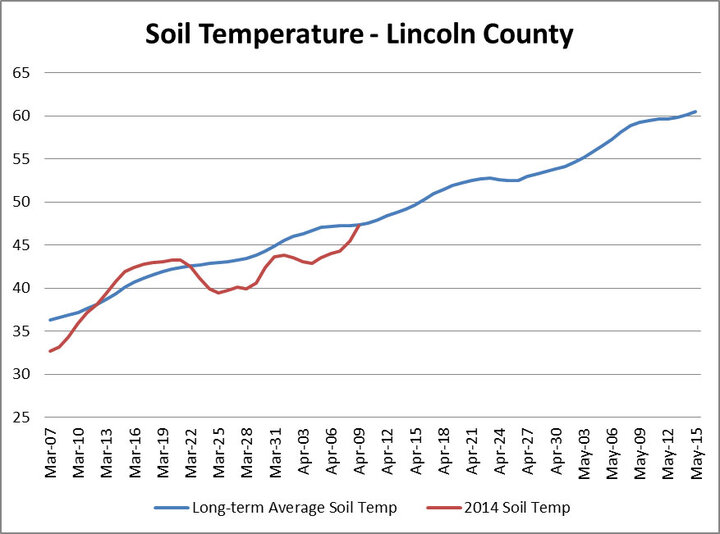
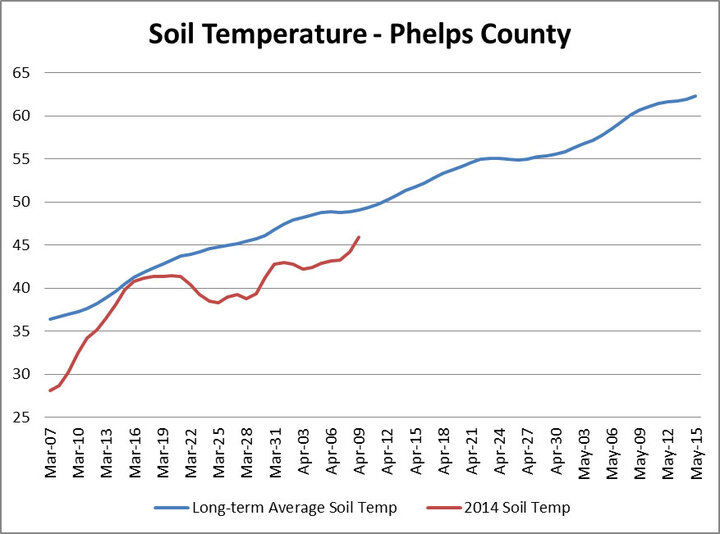
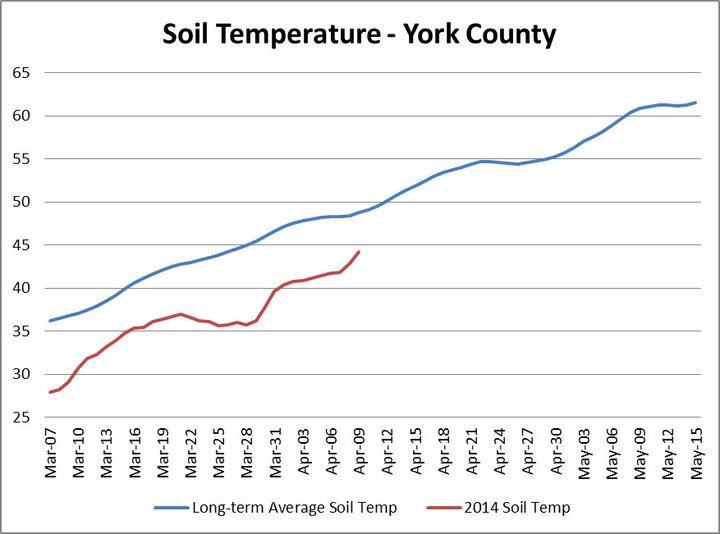
Soil temperature is an important variable to track when determining your planting schedule. For corn, the optimum soil temperature for planting is 50°F. Planting before soil reaches the optimum temperature assumes a risk of productivity loss due to poor germination or limited initial growth.
Year to year variability in weather patterns also impacts soil temperatures. What is the long-term trend for soil temperatures in Nebraska at planting time? How does this season compare with the long-term average? To answer these questions, I picked six counties (York, Lincoln, Dowson, Buffalo, Phelps, and Holt) and compared their long-term soil temperatures with 2014 data. All the data were obtained from the High Plains Regional Climate Center's Automated Weather Data Network (AWDN).
At all six sites soil temperatures were 6-8°F cooler than the long-term average the first week of March, rapidly increased until the second and third week of March, then decreased as a cold spell moved across the state.
Since the first week of April, soil temperatures have been crawling up at all six stations. (See figures, all of which link to larger versions.) York, Dawson, and Phelps counties are still 3-4°F cooler than average, while Lincoln, Buffalo, and Holt counties are near the long-term normal range of soil temperatures. Please note that the 2014 soil temperature graph shows seven-day average numbers and not the daily value. This is because seven-day average soil temperatures smooth out some of the rapid day to day changes and provide a better number for comparing with the long-term ranges.
Daily and seven-day average soil temperature information is available from the High Plains Regional Climate Center and in CropWatch Soil Temperatures.
For average dates when soil temperature reaches certain temperatures, see the NebGuide, Soil Temperature: A Guide for Planting Agronomic and Horticulture Crops in Nebraska.
Tapan Pathak
Extension Educator for Climate Variability
4/10/14
